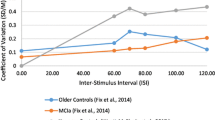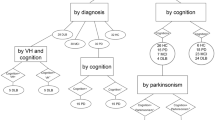Summary.
A considerable rate of misdiagnosis has recently been reported in movement disorders. One of the most difficult clinical problems is the differentiation of Parkinson's disease and essential tremor. In this study, we have examined whether event-related potentials (ERPs) could aid in the solution of this differential diagnostic problem. Visual ERPs were obtained by using an "oddball" paradigm in 20 patients with idiopathic Parkinson's disease (IPD), 20 patients with essential tremor (ET), and 20 age-matched control subjects. We found that the P300 amplitudes were selectively reduced in the IPD group at the midline (Fz, Cz, Pz) electrode sites, whereas the ET group exhibited selectively elevated P300 amplitudes at the left parietal and frontal (F3, P3) recording sites. The patients with IPD, but not ET, showed a significant prolongation of the P300 latency at each electrode site. Similarly, only the IPD patients were significantly slower in responding to the target stimulus. The primary visual evoked potential (P100) did not distinguish among the IPD, ET, and control subjects. These results suggest that visual ERPs might provide a useful diagnostic method for differentiating IPD from ET.
Similar content being viewed by others
Author information
Authors and Affiliations
Additional information
Received July 2, 1999; accepted October 5, 1999
Rights and permissions
About this article
Cite this article
Antal, A., Dibó, G., Kéri, S. et al. P300 component of visual event-related potentials distinguishes patients with idiopathic Parkinson's disease from patients with essential tremor. J Neural Transm 107, 787–797 (2000). https://doi.org/10.1007/s007020070059
Published:
Issue Date:
DOI: https://doi.org/10.1007/s007020070059




